Menu

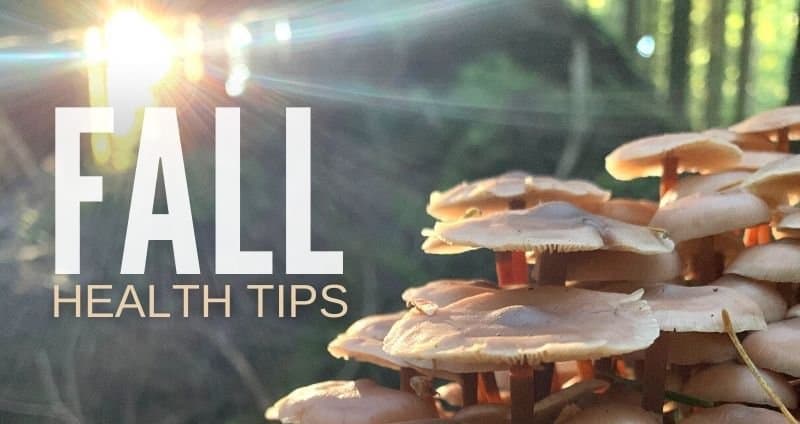
The brisk air and changes in colors of leaves announce the bold arrival of autumn. Our social media is filled with family and friends’ excitement about pumpkin spice lattes, cozy sweaters, warm soup, and plans for holidays. Researching fall health tips may not be at the top of everyone's priority list when there are Halloween and Thanksgiving to prepare for, but there are many good reasons why it should be!
For some, the transition from summer to fall isn’t just about the weather change. It can be a brutal, overwhelming time for their mental health. Moreover, pollen, mold, and dust can trigger fall allergies — all of which put more burden on your body. Many experts are saying that this year will be especially tough due to the added stress of the COVID-19 pandemic. But not all hope is lost. We’ll outline a few lifestyle tweaks and general fall health tips, and explore some mushroom supplements that can help you survive this transitional season.
What is Seasonal Affective Disorder?
What Causes Seasonal Affective Disorder?
7 Best Fall Health Tips
Medicinal Mushrooms for a Whole-Body Fall Health Boost
Best Functional Mushroom Supplements for Fall Health
Healthy Fall Recipes With Mushrooms
Many people may experience mood shifts as the seasons change, but seasonal affective disorder (SAD) isn’t just “mild depression,” “sadness,” or “winter blues.” In fact, doctors categorize it as a variety of major depression with a seasonal pattern, which means people with SAD can experience the same distressing symptoms that often interfere with daily life,1 such as:

SAD is more common in young women (ages 18 to 30 years) than in men and is more likely to affect people who live further away from the equator where there are fewer daylight hours during the fall and winter months. Specifically, people living North of the 35th parallel will not have the proximity to the sun to absorb the necessary amount of Vitamin D our bodies need daily. People with a family history of depression, bipolar disease, or other mental health issues are at an even greater risk.1
Even if you do not fall into any of the categories mentioned above, remember that mental illness does not discriminate. If you’ve noticed changes to your mental health are cyclical, that is, they appear and dissipate like clockwork around the same time every year (including summer), you may have SAD.
Scientists have yet to pinpoint the exact cause of SAD, but research studies have revealed some factors that could be at play.
An obvious player is a reduction in daylight hours that occur during fall and winter. The shorter days are thought to cause a biochemical imbalance in the brain.
One brain chemical identified by scientists as being imbalanced in people with SAD is serotonin, a neurotransmitter responsible for balancing mood.2 A study conducted by researchers at the University of Copenhagen in Denmark in 2014 showed that patients with SAD had higher levels of SERT, a serotonin transporter. Because SERT carries serotonin from the brain to nerve cells where it is not active, increased SERT activity means decreased serotonin activity, which leads to depressive symptoms and carbohydrate cravings.2,3 High SERT activity is normally not a problem during the summer because sunlight helps keep them low.
People with SAD also have difficulty with the overproduction of melatonin, a hormone best known as the “chemical signal of darkness.4” It is a hormone that signals the body to prepare for sleep. Because melatonin synthesis is triggered by darkness, its levels are typically very low during the day. The rhythm of melatonin secretion is regulated by light entering the retina in the morning, which inhibits the conversion of serotonin to melatonin. But as nights become longer in the fall and winter, melatonin synthesis increases in response. Increased daytime melatonin levels have also been observed in people with SAD. This helps explain why individuals with SAD feel sleepy and lethargic.
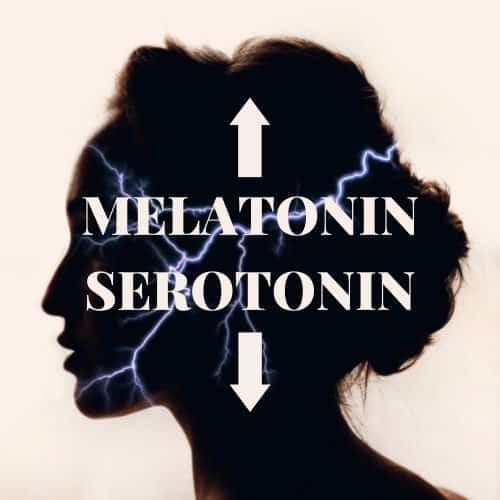
The combination of decreased serotonin and increased melatonin impact your circadian rhythms or your body’s internal 24-hour clock. Circadian rhythms are synchronized to respond to light and darkness, indicating that they are remnants of the days when our ancestors’ behaviors were dictated by weather.5 In other words, winter was once a time of rest and sleep. But with the invention of the lightbulb and other technologies, our modern lifestyle enables and requires us to act against nature’s rhythms. We now act as if it’s summer all the time, demanding high levels of productivity from our bodies. It’s no wonder our biological “clocks” get thrown off by the constant demand and resists it in the form of chronic fatigue. And for some of us, it results in SAD.
The good news is that SAD is treatable. Some individuals may need to seek treatment with a healthcare professional; however, others respond positively to lifestyle changes and supplements like the ones we describe below.
Traditional Chinese Medicine follows the Five Element Theory, which is used to describe the relationship between everything in the universe. The five elements (fire, metal, water, earth, and wood) are the basic elements of the world and can be used as a blueprint that shows how nature interacts with the body. Unlike summer, which the fire element dominates, the metal element governs the fall. The qualities of the metal element include organization, precision, boundaries, and structure. Just as wild animals get their “affairs” in order, humans must also shift their priorities from the carefree days of summer to a structured routine and introspective energy in preparation for the winter days ahead.
Metal also governs respiration, and fall is a time when many people get sick with colds and flu that affect their airways. TCM associates the lungs with the feelings of grief and of letting go; for people who love summer, the transition to fall can be difficult. Lungs are also considered to be tender organs in TCM for their ability to “grasp” qi (life force) from the heavens and draw it inwards. As your qi becomes unstable during the transition from summer to fall, your lungs are especially susceptible to wind and cold.

According to TCM, each organ in the body is paired with another, acting as either yin or yang. Health is achieved when yin and yang are in harmony. Each organ pairing is also associated with the seasons of the year. For fall, the organ pairing is the lungs (yin) and large intestine (yang) meridians. While the lungs bring in qi from the heavens, the large intestine is responsible for letting go of waste and keeping only what’s important. Imbalance in the lung and large intestine meridians can create feelings of sadness and elimination problems like constipation.
Fall health tips from a TCM perspective focus on keeping your qi balanced: prioritize breathing, self-care, rest, and reflection. Structure and routine in your daily life can also keep the metal element balanced. At the same time, soften your boundaries by allowing yourself to be supported with connections to family and friends.
Finally, part of the difficulty with transitioning between summer and fall is the mental resistance to the change. Giving yourself permission to slow down, embracing different routines, and accepting that this is naturally a lower-energy time of year will help you remain balanced during this transitional season.
Think of your body as a bridge. Most bridges can handle a lot of stressors or “loads.” Still, each bridge has a load limit. Once the bridge reaches that limit, it can collapse.
Enter the total load theory.
For your body, stressors come from just about anywhere: from your environment to emotional trauma to insufficient sleep and exercise. Yes, even past infections can contribute to the body load. The accumulation of stressors — which begins even before you’re born — takes your body that much closer to its threshold. At some point, the body can no longer handle the cumulative effect of the load and begins to show signs of chronic illness or disease.
Fall is a great time to pay attention to your toxic load, especially with the added burden of pathogens (like viruses), allergens, and lack of sunlight. We must be proactive not only to reduce our total stress load but to expand our immune system’s capacity to adapt and deal with the stresses that come with fall. Keep reading to discover simple fall health tips you can implement in your daily life.
Many people enjoy cooler weather and bold colors of fall, although they might not all enjoy the health challenges that come with the transition. Stress from the COVID-19 pandemic has brought even more hardships to an already challenging time.The good news is that there are many things you can do from home to keep yourself healthy this fall.
Exercise can lift your mood as it cleanses your body of toxins and increases energy and circulation. It also helps keep you looking your best, which is a huge confidence booster. Going to the gym may be hard during the pandemic, but that doesn’t mean you can’t keep your body moving! The act of integrating exercise into your daily routine will do wonders for your mood. When you’re feeling low, one of the most instantly effective fall health tips is to go for a quick walk around the block or among the colorful autumn trees for an immediate shift in your energy and a boost to your endorphins.
Proper sleep is essential to keeping your immune system strong and is one of the most important of our fall health tips. It's during slumber that our bodies heal and repair, and lack of quality sleep is associated with poor stress management, weight gain, depressed moods, and poor cognitive function. Try to aim for seven to nine hours of sleep every night to ensure you’re well-rested. Sleep hygiene is just as important as getting enough sleep. Here are some of the tips for optimizing your sleep, which can also be found in our article, How do Mushrooms Support the Immune System?

In the age of social media, we’re pressured to be “on” all the time. It’s time to put your phone down and take some time for self-care. Whether you choose to listen to music, journal, meditate, take a bath, or get a massage, engage in activities that make you feel good and calm. If you journal, you can track your moods to get more in touch with how you feel every day.
Unsurprisingly, stress is closely associated with depression. Chronic stress can create hormonal imbalances, triggering effects such as insomnia, depression, mood swings, and fatigue. Practice stress reduction techniques like Progressive Muscle Relaxation, 4-7-8 breathing, yoga, or meditation.
There’s no question about it: your diet affects your brain health. As the seasons shift, our diets must also shift. Some optimal foods for fall include pumpkins, squash, eggplant, kale, beets, broccoli, and root veggies like onions, garlic, and scallion. Avoid inflammatory foods such as sugars, processed and refined foods, dairy, and gluten. Lean proteins, omega 3-rich foods, and healthy fats like nuts and seeds will keep your blood sugar levels balanced to prevent fatigue and mood swings.

Your diet can also affect the health of your lungs. Excessive consumption of cold and raw foods can create dampness or phlegm. In general, eating more warming foods is helpful. This is an ideal time of year to make comforting stews, soups, and broths from the abundance of root vegetables and fresh mushrooms.
Being proactive with your diet is one of the under-valued fall health tips. How we eat affects how we sleep, and vice versa. Investigators in a 2017 study reviewed data on 172 participants between 11 sleep studies and found that after just one night of limited sleep, people consumed an average of 385 extra calories the next day. The participants also chose foods with more fat and less protein.6
A drop in temperature triggers a self-preservation mode in your body, resulting in cravings for high-calorie, high-carbohydrate foods that will warm your body up quickly. It’s no wonder we all feel the need to hit the gym when spring comes back around. Fall is a great time to adjust your body to better eating habits that will regulate your blood sugar levels, which will help to curb the food cravings and their intensity.
Light therapy involves exposing yourself to bright white light using a box or lamp specially designed for this purpose, thereby making up for the diminished sunshine. Clues that light therapy might help alleviate SAD symptoms were first documented in a 1984 study, in which patients exposed to bright white light reported improvements in their sleep quality and depression.7 Since then, many clinical trials have been conducted worldwide, and light therapy has become the preferred first-line treatment of SAD.

The strategy for the administration of bright light therapy for SAD has been refined and optimized over the years. The Center for Environmental Therapeutics recommends using a fluorescent lightbox (10,000 lux, preferably white light) with a diffusion screen that filters ultraviolet (UV) rays. Try using the lightbox for 30 minutes every morning, ensuring that the angle of the box is approximately 30° from the line of gaze. Alternatively, a lower-intensity lightbox (e.g., 2,500 lux) may be used with a longer exposure time (1 to 2 hours).8,9
People with certain pre-existing eye and skin conditions and those who are taking photosensitizing medications (e.g., some antibiotics) may need to seek the guidance of an ophthalmologist or a dermatologist before trying light therapy. While this is one of the fall health tips that require a little monetary investment, it is well worthwhile if you're one of the millions of people who suffer from this seasonal mood slump.
Vitamin D is essential for our health, so much so that nearly every single cell in your body has a vitamin D receptor.10 Many people may know vitamin D is something that keeps their bones healthy. Not as many people know that vitamin D influences over 2,000 genes in our bodies. And Mother Nature seems to agree on its importance, as she has provided an incredibly easy way for us to get most of the vitamin D we need: the sun.But as daylight hours get shorter during the fall and winter, people in the Northern Hemisphere are at risk of developing vitamin D deficiency, a condition that has been associated with:
The good news is that supplementing with vitamin D is one of the easiest and most accessible fall health tips to combat the symptoms above. If you’ve been shopping for vitamin D supplements, you’ve likely seen two different forms — D2 and D3. What are the differences? And is one form better than the other?
To compare the two, we have to briefly look at how vitamin D is converted for use in the body. Irrespective of the source, vitamins D2 and D3 undergo a 2-step activation process, first in the liver and then in the kidneys, to turn the vitamin D into the calcitriol the body needs.16
Although a single high dose of vitamin D3 appears to be more effective at raising levels of the precursor of calcitriol in the body (according to one research study), this difference in effect is lost with daily supplementation. So, the vegan-friendly D2 vitamin sourced from mushrooms will provide the body with the levels of calcitriol it needs when it is taken daily, as you would with any vitamin D supplement.16
This is good news for vegans and vegetarians. Most D3 is made from irradiating sheep lanolin, a source that will be a cause for concern for individuals interested in animal rights. At Real Mushrooms, we believe that when it comes to your health, it’s important to question the quality and source of just about everything. That’s why we provide a whole-food, plant-based source of vitamin D2: mushrooms.
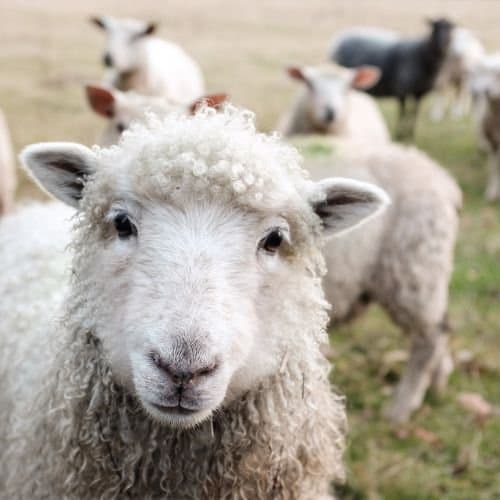
Wild mushrooms only have small amounts of vitamin D2 and almost no D3; however, they also have the ability to absorb UV light and convert ergosterol, a fungal sterol, into vitamin D2. Researchers found that mushrooms exposed to UV light have increased concentrations of vitamin D2. This suggests that mushrooms can become a non-animal based, unfortified food source of vitamin D.17
Vitamin D is a fat-soluble vitamin that can build up in the body, so it is important not to over-supplement. For most people of ages 9 to 70, up to 4,000 IU per day has been shown to be safe.18 Real Mushrooms’ D2Z contains 2,000 IU of vitamin D per serving (2 capsules), so the risk of overdoing it is very low. If your levels are chronically low, it may be best to work with a medical practitioner to determine the appropriate dosage.
For a more extensive discussion on vitamin D and mushrooms, check out our article Vegan Vitamin D from Mushrooms.
Medicinal mushrooms have been used for centuries, but recent health trends have resulted in a resurgence of interest in these superfoods. And for good reason. Mushrooms are powerful sources of nutrients that provide a wealth of health benefits:
...and much, much more. This means that mushrooms can also play a critical role in helping your biorhythms ease into the autumn transitional period. That's why, as far as fall health tips go, medicinal mushrooms should also be on your self-care list.
Mushrooms have a myriad of health benefits because they are adaptogens. They work to counteract the harmful effects of stress in the body, whether it be physical, biological, or chemical. Adaptogens are meant to bring balance, or homeostasis, back to the body. This is done by interacting with the hypothalamic-pituitary-adrenal (HPA) axis and the sympathoadrenal system. By tweaking hormone production and physiological responses, adaptogens like mushrooms keep your body functioning optimally, and they have a natural intelligence to modulate these systems as needed.
You can find out more about the health benefits of mushrooms by reading 7 Medicinal Mushroom Benefits for Health and How do Mushrooms Support the Immune System?
Mushrooms are trending, but the fact is that not all mushroom supplements are the same. And despite having been used in traditional medicine for thousands of years, there are few control standards in the Western market. In short, there’s a good chance that the “mushroom” supplement you see at the supermarket contains little to no mushroom at all.
When shopping for mushroom products, you might come across the word “mycelium.” Mycelium is the underground network that feeds on organic plant matter known as the substrate. If conditions are right, the mycelium will produce the mushroom which is also known as the fruiting body.
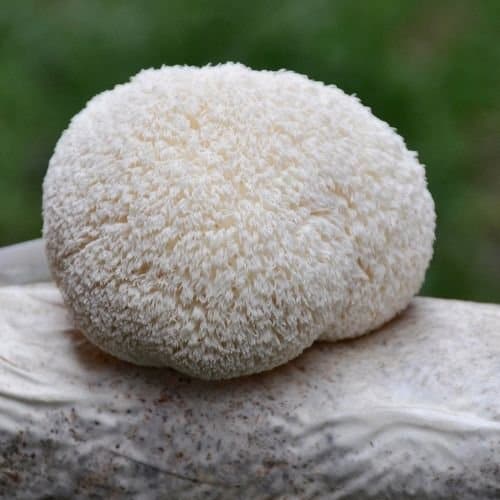
It is important to note that a mushroom is not mycelium, and mycelium is not a mushroom. These are two very different and distinct parts of these fungal organisms.Now that we know mycelium and mushroom are not interchangeable terms, do you know what’s in your mushroom supplement? For most mushrooms, the majority of the immune-boosting compounds, like beta-D-glucans and triterpenoids, are in the fruiting body.
You may also see the polysaccharide content on a medicinal mushroom supplement label. Companies often point to their high polysaccharide levels to promote their products as being the most efficacious. Polysaccharides are the main active compounds in mushrooms, so the more the merrier, right?
Not so quick. While the important polysaccharides in mushrooms are beta-D-glucans, they are not the only type of polysaccharide. Polysaccharides are complex sugars and include things like cellulose, glycogen and starch. So while high polysaccharides may sound good, they could actually be inactive starches in the form of fillers. This is why it is important to look for beta-glucan content when selecting a mushroom product.
Many mycelium products grow on grains like rice and oats. The grain eventually becomes inseparable from the mycelium, leading to high amounts of starch and diluted amounts of beneficial compounds. This means that mycelium products grown on grain, which contain starches, can have elevated levels of polysaccharides. Although misleading, many companies choose not to disclose the actual beta-D-glucan content of their products. An in-depth discussion of this topic can be found in Medicinal Mushroom Benefits: Mycelium vs. Fruiting Body.
To ensure that you are getting the most potent medicinal mushroom supplement, Real Mushrooms only uses extracts from the mushroom grown organically in natural environments.

D2Z is the newcomer to the Real Mushrooms product line, and we believe it’s the perfect supplement to support the immune system during the transition to fall. As already discussed earlier in the article, getting adequate amounts of vitamin D is crucial to staying healthy both physically and mentally.
We take sleep seriously at Real Mushrooms, which is why we paired vitamin D2 with zinc, the second most abundant trace mineral in the human body. Found in all body tissues, zinc plays an essential role in many biological processes.
Zinc deficiency affects two billion people worldwide and can lead to:19
With the possible exception of the pancreas, the brain contains the highest levels of zinc in the body. Studies have found that zinc and pathologies of the central nervous system are highly connected — in other words, disturbances in the brain zinc homeostasis are associated with a wide range of neurological disorders, including depression.20
There is a growing body of evidence that zinc supplementation may help reduce the severity of depression and benefit antidepressant therapy.21,22
Zinc is also a critical factor in a healthy functioning immune system. Researchers have found that zinc-deficient individuals had a higher risk of pathogen infections.23,24,25,26
But we didn’t stop there. We’ve included Reishi and Chaga mushrooms in D2Z to help keep your immune system in tip-top shape. To read more about the health benefits of mushrooms for health and sleep, check out 7 Medicinal Mushroom Benefits for Health and The 3 Best Mushrooms Supplements for Sleep.
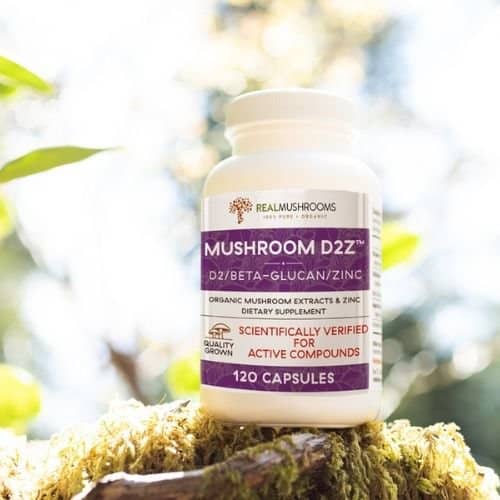
Interested in starting a mushroom supplement but not sure which one to choose? We’ve got your back. 5 Defenders is our best-selling, 100% organic blend of five mushrooms with powerful immune system supporting compounds — Reishi, Shiitake, Maitake, Turkey Tail, and Chaga. Our 7 Medicinal Mushroom Benefits for Health post discusses the benefits of each. Beyond our fall health tips, this blend is a staple for mushroom lovers.
Did you know that your pets can also benefit from medicinal mushrooms? Many Real Mushrooms customers report seeing positive changes in their pets after starting them on medicinal mushroom products. To learn more about how medicinal mushrooms can benefit animals, check out our article Medicinal Mushrooms for Pets.
Real Mushrooms’ Cordyceps-M is extracted exclusively from Cordyceps militaris and has more than 25% beta-glucans, the polysaccharides renowned for their health benefits. C. militaris produces much higher concentrations (up to 90 times more!) of the compound cordycepin (3’-deoxyadenosine) than other Cordyceps species. Cordycepin has potent immune-boosting, antioxidant, antimicrobial, and anti-inflammatory properties.27 It is also known to help boost energy levels and exercise performance. Our article, Cordyceps Mushroom Supplement Types Explained + The Health Benefits, gives a more extensive discussion on cordyceps mushrooms.
Our stress response is characterized by the release of stress hormones such as cortisol from the adrenal cortex and the release of neurotransmitters such as dopamine, epinephrine (also called adrenaline), and norepinephrine from the adrenal medulla.
Reishi mushroom's polypeptides may help to regulate these responses and support the body’s natural process of bringing stress hormones back to normal, appropriate levels. When used together with lifestyle changes including nutrition, exercise, and behavior-based stress management— like mindfulness or meditation—reishi has the potential to support whole-body balance. A calming quality has been attributed to reishi as well, leading to an increased level of general relaxation.44
While reishi mushroom benefits the mind to help alleviate occasional stress, similarly it can also be used as a supplement to support restful sleep. A study in rats found that reishi reduced sleep latency, which is the time it takes to fall asleep, and increased sleeping time.45 Its general calming effects mentioned above can help you get to sleep by soothing everyday worry and racing thoughts.46
Reishi is considered the "King" of medicinal mushrooms. To find out how it can comprehensively support your wellbeing, read our complete guide to reishi mushroom's benefits & usage.
Lion’s mane is a white, shaggy mushroom that looks, well, like a lion’s mane. It is rich in antioxidants and other chemical compounds that strengthen your immune system, but it is perhaps best known for its neuroprotective properties. It may not be the obvious choice, but this mushroom deserves a spot on our fall health tips. Animal studies have found that those given lion’s mane extracts had reduced symptoms of anxiety and depression.28,29 In a small study conducted in Japan, women with menopause who ate cookies containing lion’s mane reported feeling less irritable and anxious than those who did not.30 Other researchers have found that lion’s mane may have the potential to mitigate cognitive decline.31,32,33,34
Other mushroom products that may help your wellness throughout fall and winter include Real Mushrooms’ chaga (capsules and powder) to help promote gut health and turkey tail (capsules and powder) for immune system support.
1. Vegan Golden Milk with Mushroom Extract
To help get your circadian rhythm back on track, we’ve created two vegan golden milk recipes, one for morning and one for night. The morning recipe contains Lion’s Mane, well known for its ability to support healthy brain function and fight oxidative stress. Combined with ashwagandha, ginger, black pepper, cinnamon, and turmeric (a.k.a. the “healing spice” responsible for the golden color), this golden milk with Lion’s Mane is a powerful way to start your morning to provide you with sustained mental energy.
The second golden milk recipe contains Reishi mushroom extract, known for its immuno-stimulating and sleep-supporting benefits.35 Boost immune system functions, reduce stress, and improve sleep? Including reishi in our nighttime golden milk recipe was a no-brainer!
Click here for the detailed golden milk recipes.

2. Fire Cider with 5 Defenders
Real Mushroom’s resident Naturopathic Doctor, Mason Bresett, assures us that while it may take a little courage to down a shot of this fire cider, the health benefits are well worth it. It includes the 5 Defenders blend of immune-supporting mushrooms but also contains some acidic, spicy, and sweet elements. The video below explains why the ingredients are helpful for supporting the immune system and digestion and for keeping your body’s inflammation balanced as part of your fall and winter health plan:
Click here for Mason’s fire cider recipe.
The keto diet is widely used as a weight-loss tool, but did you know it could also affect the brain? Research has shown that the keto diet may benefit individuals with migraines,36 Alzheimer’s disease,37 and yes, mood disorders like depression.38,39,40
Now you can give your keto diet an extra boost with our highly versatile and very popular Keto Stuffed Mushroom recipe. If you’re a vegan, don’t worry! We included tips for vegan substitutes.
Click here for the detailed keto stuffed mushrooms recipe.

Winter is coming, and that means the flu season will also be in full swing soon. The lack of sunlight leads to low levels of vitamin D, which in turn compromises our immune systems. Functional mushrooms are the ideal supplements to boost your immune system and help safeguard you and your family members from nasty viruses.
Chaga, for example, has been included in our Flu Season Mocha recipe for its potent antiviral properties41 and makes a great addition to any coffee. Not a fan of chaga? Not a problem. Like many of our recipes, the Flu Season Mocha recipe is highly versatile and will work well with any of our mushroom extracts.
Click here for the details mocha recipe.
5. Keto Donut Recipe: Cinnamon “Sugar” With Brain-Boosting Lion’s Mane
Who knew donuts could be good for you? The heavenly aroma of this donut recipe is sure to give your mood a huge boost. Treating yourself to the comfort of sweet mini donuts comes with few downsides when you make them using this keto recipe with a healthy twist: the addition of Lion’s Mane for your brain.
Click here for the detailed keto donut recipe.

Fall is a beautiful time of year, but it can also be a challenging one for many people. Holidays are also coming up, which only adds to the stress. But with these health tips, fall doesn’t have to be a season of misery and gloom. Mushroom supplements and lifestyle changes are safe and effective ways to get through the transition.
Be gentle with yourself this fall and take extra time to practice self-care. However, if you find yourself unable to shake off the depressive feelings, be sure to seek the help of a healthcare professional. Please do not simply dismiss depressive symptoms as “winter blues.” Seasonal Affective Disorder is a complex condition that needs to be taken seriously.
As always, talk to a healthcare professional before making any drastic changes to your diet or supplements.

*Disclaimer: The statements made in this article have not been evaluated by the Food and Drug Administration. Any products mentioned are not intended to diagnose, treat, cure, or prevent any disease. The information in this article is intended for educational purposes. The information is not intended to replace medical advice offered by licensed medical physicians. Please consult your doctor or health practitioner for any medical advice.
Disclaimer: The information or products mentioned in this article are provided as information resources only, and are not to be used or relied on to diagnose, treat, cure, or prevent any disease. This information does not create any patient-doctor relationship, and should not be used as a substitute for professional diagnosis and treatment. The information is intended for health care professionals only. The statements made in this article have not been evaluated by the Food and Drug Administration. Any products mentioned are not intended to diagnose, treat, cure, or prevent any disease. The information in this article is intended for educational purposes. The information is not intended to replace medical advice offered by licensed medical physicians. Please consult your doctor or health practitioner for any medical advice.